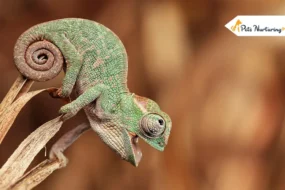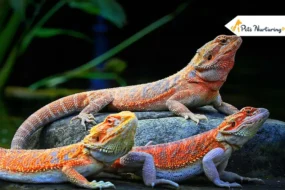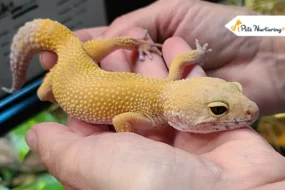
The American iguana is a large, arboreal species of lizard. Iguanas are mostly herbivorous in nature and found in various geographical areas. They are native to southern Brazil and Paraguay, Mexico, and are very common throughout the island of Puerto Rico. On the island, they are commonly known as gallina de palo meaning chicken of the trees. Pet iguana is amazing if you do things right.
Feral iguana populations also exist in many of the states of North America where they are considered invasive species. Iguanas are one of the most popular pet lizards due to their calm temperament and bright colors.
You need to be very committed to taking care of them if you decide to have one as a pet. They grow quite large and thus need proper housing and feeding management. Iguana lives long and can be very strong, you need to build a strong relationship by handling them regularly and properly.
Basic Overview Of Iguana
Iguana pet Overview
Scientific name: Iguana
Other names: Iguana, American iguana, Green iguana, Common green iguana, Gallina de palo
Lifespan: 10-15 in captivity (can live up to 20 years)
Size: Length: up to 7 feet Weight: 20 pounds
Diet: vegetarian
Climate: Tropical
Personality: Unique and interesting
Light requirement : UVB lamps needed for adequate heat and light
Care : Challenging
Colour: Green (brilliant green to pale blue-grey)
Compatibility: Not recommended for children and inexperienced individuals, prefer to be the sole lizard pet
Humidity: 70-80%
Temperature : 96-100 degrees Fahrenheit
The green iguana is the most common species of iguana and was first discovered by a botanist named Carl Linnaeus. The green iguanas are found in different colors with varying morphology but caring for any type is basically the same.
Iguanas from the cyclura family also make for one of the best iguana pets. The rhinoceros iguana, the grand cayman iguana aka the blue iguana, and the Cuban iguana are also well known to make the best iguana pets but they require more space and temperature than the green iguana.
Common Breeds of Iguana as Pets
Iguanas with different countries of origin may have different colors but are all considered as the types of green iguanas. Commonly found colors of iguana as pets are blue, purple, red, yellow, orange, and pink.
Behavior and Temperament of the Iguanas
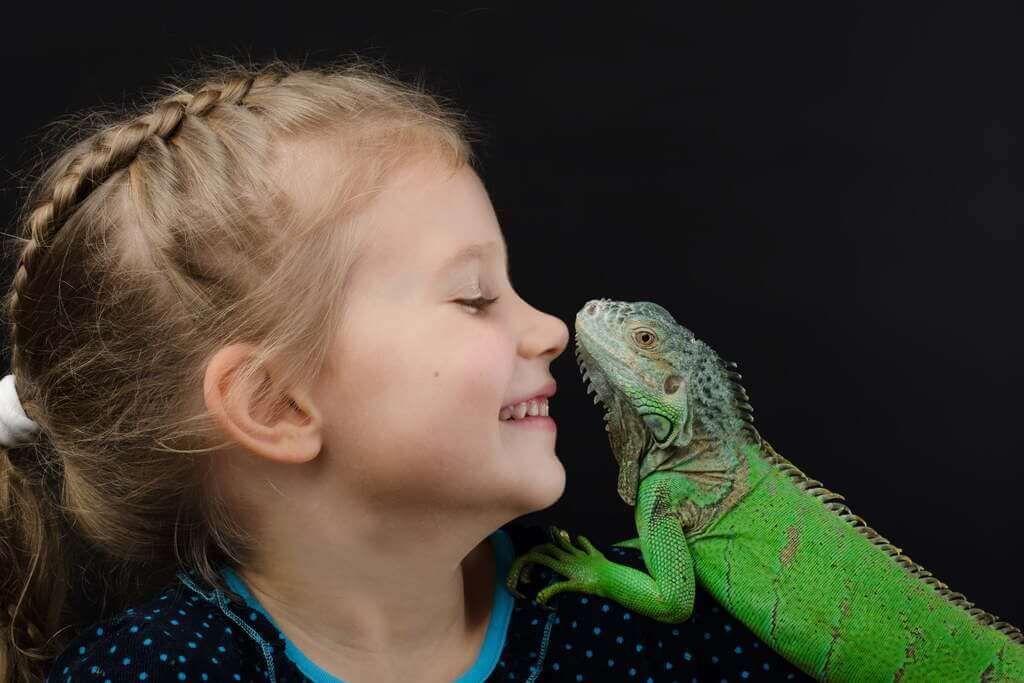
Adult iguanas are quite lazy and calm but baby iguanas can move around quickly and show comparatively more activity. Most iguanas love to climb when they are out of their cage, they’d climb rocks or trees in the surrounding, some even enjoy climbing onto their owners.
If your iguana likes to climb on you, make sure you are prepared for it as they have sharp claws. Iguanas are stronger than you may apprehend and their tails are capable of causing serious harm. An adult iguanas tail can easily break a bone which rarely ever happens but it’s better to know what your pet is capable of. Tail whipping is a common defense mechanism when your iguana may be scared.
Notice their mood before handling them. Don’t force them if they seem to resist handling or display aggression and take extra precautions around children. They commonly change color when they are outdoors, most become darker outdoors to absorb heat.
Iguanas love to bask in the sun. observe your pet’s behavior and if you see anything out of the ordinary, take them to an exotic vet. Iguanas commonly show behavior like tail whipping and head bobbing. Head bobbing is seen when they are aggressive and trying to be dominant. These behaviors must be kept in check by training them during their initial years.
Other Things To Know
Another thing iguanas commonly do that many pet owners may be unaware of is shedding. Baby iguanas shed every 4-6 weeks whereas adults only shed once a year. This skin shedding is known as molting and if you observe that your pet is unable to molt smoothly by shedding their old skin, you can provide a little help by soaking them in some water or moistening their surroundings.
Iguanas have the third eyelid that is photoreceptive and they use it to discern the presence and absence of light. This helps them in thermoregulation and in maintaining the circadian rhythm.
All green iguanas have nasal glands known as salt glands. Improper diet can lead to filling up of these glands with salty water and you may see nasal discharge. If this is observed, visit your vet.
Iguana Pet Care
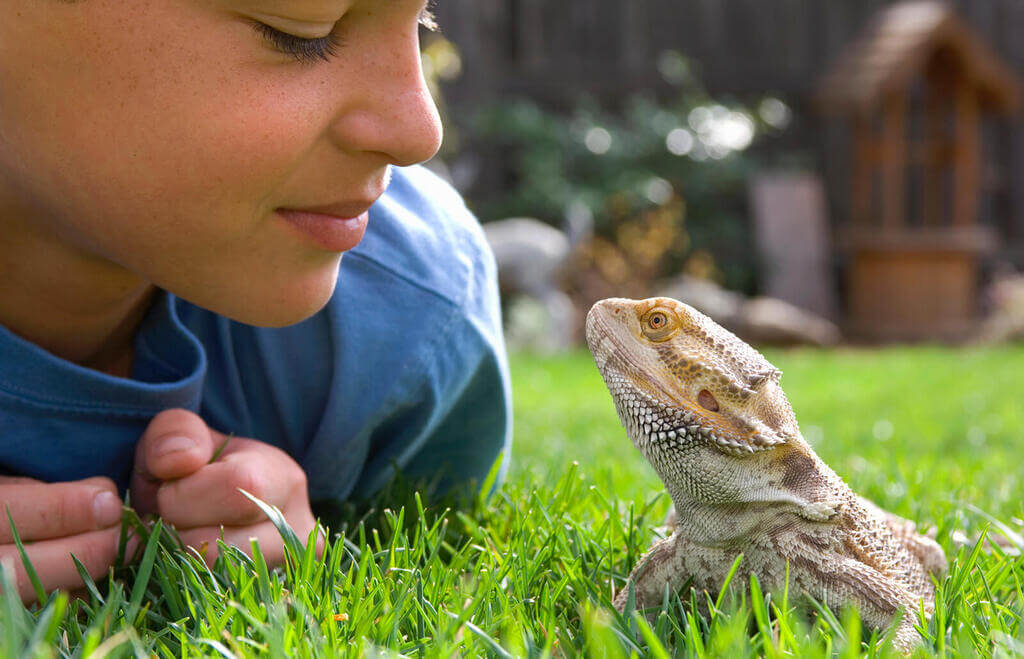
Iguanas need a lot of exposure to sun rays to thrive, hence it is more preferred that you keep them in an outdoor enclosure. You’ll also need to provide them with a lot of space as a full-grown pet iguana is quite large.
Space Requirement
Iguana pet care can be simple with most iguanas that don’t require much space to be comfortable if they have enough area to climb and turn completely in their enclosure. A baby iguana around 18 inches requires much less space compared to an adult iguana pet that can grow up to 6 feet long or more.
Adult iguana must have an open enclosure or a tank that is at least 12 feet long and 8-10 feet high. It can be made of a variety of materials like wood, mesh, plexiglass, etc. doesn’t make a glass enclosure as they provide poor ventilation and excessive humidity which can lead to mold and fungus formation, and cleaning them regularly can become extremely tedious.
Enrichment
Enrichment is an important part when you keep an iguana pet. Provide your iguana with toys that are safe for them, put branches and rocks in their enclosure as they love to climb. Bath is another option for enrichment for iguanas who love it. Check everything for ectoparasites before introducing them in your iguanas’ enclosure.
Bedding Material in the Enclosure
Paper towels or carpets should be used at the bottom of the enclosures since using loose substrate comes with various risks and health hazards. Iguanas are known to be sedentary in nature, with a good amount of time provided for basking in the sun and cooling down, they happily rest for the remaining portion of the day. Although they seem lazy, they can be extremely fast and dangerous when agitated.
Bathing Your Pet Iguana
Many iguanas enjoy being in the water and can be given a weekly bath wherein you soak them in water up to their stomach, not more. Don’t do it often if your iguana is stressed with this activity and expresses the stress by thrashing its tail, trying to escape, or starting breathing heavily with an open mouth.
Most iguanas enjoy bathing and it can be used as an enrichment activity for them. Bathing helps a lot during the shedding season as moisture is needed for shedding effectively.
Temperature and Light Maintenance
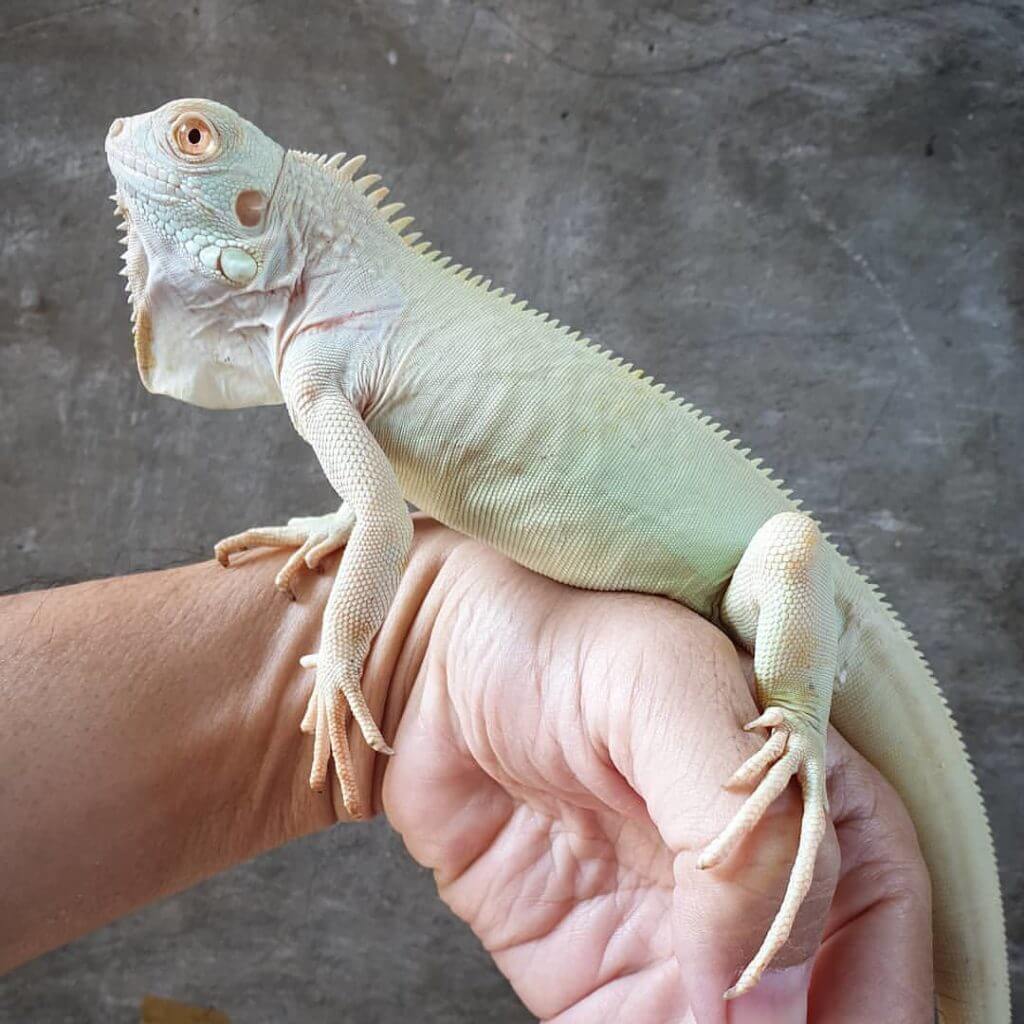
Make sure your tank or enclosure has a proper cooling area and your iguana doesn’t always have to be in the sun as it is an important part of iguana pet care. For heating, you can also use bulbs in their tank as heat is an important factor for their digestion and growth. The temperature in their enclosure should be maintained around 90 degrees Fahrenheit with the maximum being 105 degrees Fahrenheit.
To provide heat in the night fixtures like ceramic heat lights or red/purple lights can be used and temperature can be maintained at 75 to 80 degrees Fahrenheit. These lights emit heat without emitting light which helps in the non-disruption of your pet’s light cycle. Iguanas require 12 hours of daylight and 12 hours of darkness for proper functioning.
Humidity
Humidity in their enclosure should be maintained at 75%. You can achieve that by misting the enclosure and to measure the humidity, a hygrometer can be used.
With the right living conditions, iguana pet care can be pretty simple and fun and you’ll have the best iguana pet.
Signs that your iguana isn’t keeping well :
- Lethargy
- Stuck head
- Inappetance
- Abnormal skin coloration
- Dry skin or presence of bumps or pustules
- Mouth abnormalities
- Gasping for breath
- Decreased stools
- Diarrhea
Feeding an Iguana Pet
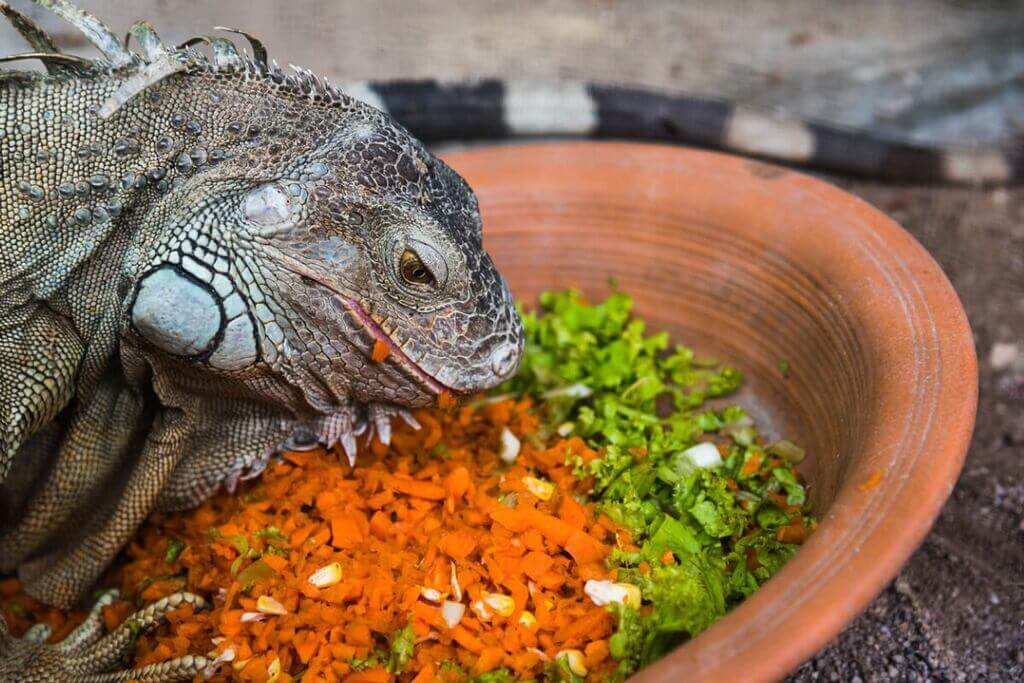
Clean water should always be available to your iguana to keep them hydrated. They are herbivorous in nature which means they only eat plant matter. Their diet is made up of 90% vegetables whereas the other 10% can include fruits.
Meat, dairy, sweets, or other human foods should never be fed to them. A 2:1 calcium to phosphorus ratio is essential for them, which can be sprinkled over their veggies.
Don’t feed them veggies that have a high concentration of oxalates as it can disturb calcium absorption. Young hatchlings and baby iguanas need to be fed twice daily with finely chopped veggies that are easy for them to swallow, whereas those who are older or over 2 feet long can be fed once daily.
Cost of a Pet Iguana

The cost of an iguana or iguana pet price varies depending on a lot of factors. Iguana pet prices can range from 10$ to 550$ depending on the breeder, breeding conditions, breed of iguana, gender, the color of your iguana, etc.
You can adopt an iguana or buy one from your local pet stores, breeders, or rescue groups if you live in the tropical region where they are commonly found. While getting an iguana, check various factors to make sure they aren’t ill. Make sure they have active and bright eyes, healthy skin, normal feces, no discharge from any of the orifices, and are active.
All the above-mentioned factors are important when deciding the cost of an iguana.
Pros and Cons of a Pet Iguana
Pros
- They are smart and recognize you.
- You don’t need to kill insects to feed them, they are vegetarians.
- They can be potty trained as they usually poop in the water.
- Iguana has a long lifespan.
- They have interesting personalities.
- They don’t need a lot of your time.
- Iguanas are not smelly or noisy.
- They love a proper routine.
- Their dietary requirements are easy to meet.
Cons
- They are very large in size and require a lot of space
- You’ll need time to tame them and create a bond.
- Finding a reptile vet nearby can be a bit difficult.
- Putting UVB lamps in their enclosure is a must.
- They need moisture and a temperature-controlled environment.
- Iguanas can be unpredictable at times.
- Not all of them are affectionate.
- They have sharp teeth and claws.
- They can be difficult to train.
Closing Words
All iguanas are unique and have different personalities, there’s no single description that fits all. Some are docile whereas others may need to have a lot of patience while training them. They are beautiful lizards that make for interesting pets. Their diurnal nature makes them easy to be watched and taken care of.
They are not a great idea for first-time owners and people with small children in the house as they require an experienced person to handle them. They grow large and require a well-controlled environment to thrive in which is why you must be sure about committing to them before you get one home.
Explore further :








